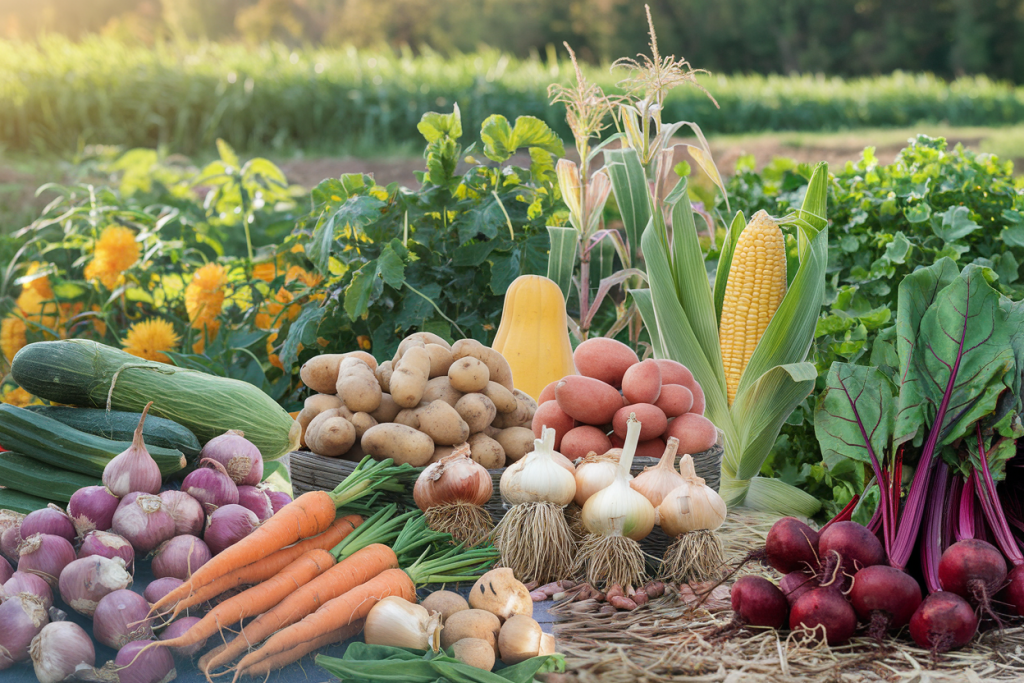In an age of increasing uncertainty, more and more people are turning to self-sufficiency as a way to ensure their families are well-prepared. Whether it’s economic instability, food shortages, or simply a desire to reconnect with nature, growing your own food is both a practical and deeply satisfying endeavor.
In particular, cultivating a “survival garden” can provide a sustainable, nutrient-rich food source that lasts for the long haul. These crops are chosen not only for their ease of growth but for their ability to store well in root cellars and keep your pantry stocked with wholesome goodness even in times of crisis.
Today, we’ll outline the best survival foods to grow in your garden. These crops will give you resilience and peace of mind, knowing that you can rely on your garden to feed you when you need it most.
1. Potatoes
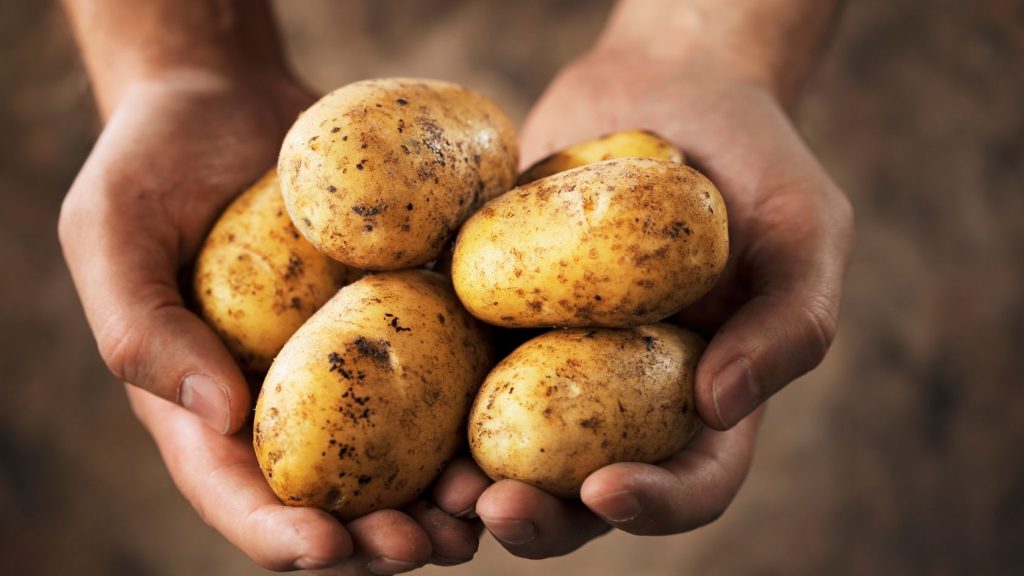
Why They’re Ideal for Survival:
Potatoes (including sweet potatoes) are a nutritional powerhouse when it comes to survival. They’re loaded with calories, essential for maintaining energy in difficult times, and they’re incredibly versatile in the kitchen. You can mash, roast, fry, or bake them, and each method brings out their earthy flavor in different ways. A few potatoes go a long way in providing essential nutrients to sustain your body.
Growing Conditions:
Potatoes are easy-going, happily growing in a variety of climates. You don’t need vast tracts of land either—these tubers will even flourish in container gardening or raised beds. As long as they have well-drained soil and plenty of sunlight, your potato crop will thrive.
Storage & Preservation:
Once harvested, potatoes store beautifully. Kept in a cool, dark place inside organic cotton potato sacks, they can last for several months, providing you with a steady supply of food well into the winter.
Nutrition:
Rich in carbohydrates for energy, potatoes also pack a punch with potassium and vitamin C, making them a well-rounded staple for your survival garden.
2. Beans
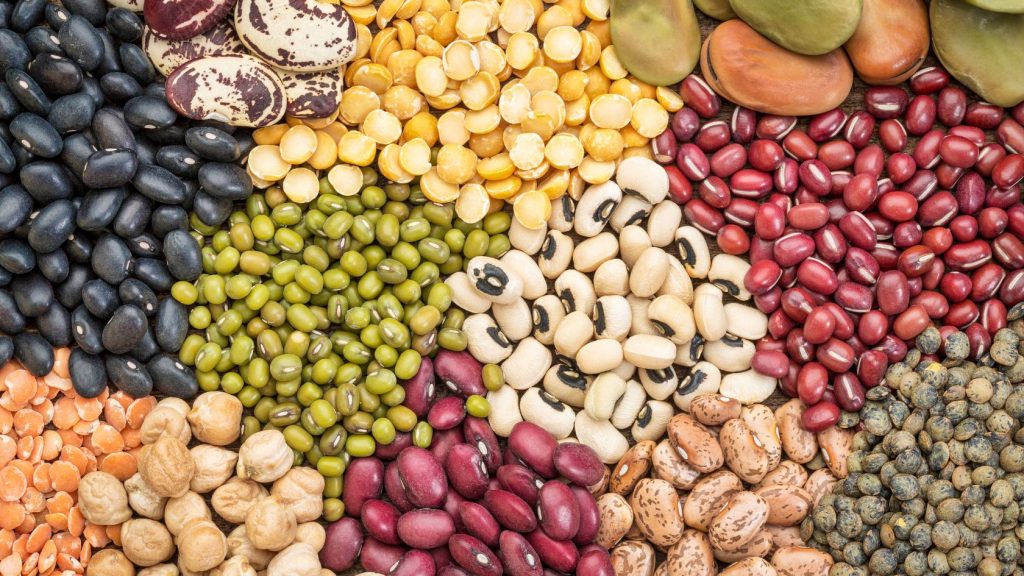
Why They’re Ideal for Survival:
Beans are a survival-food legend, known for their high protein content, which is essential when animal protein might be hard to come by. They are filling, full of fiber, and offer a balanced nutrient profile that makes them a crucial part of any emergency food plan.
Growing Conditions:
Beans thrive in sunny conditions and are one of the most rewarding crops to grow. Whether you’re planting bush beans or pole beans, these legumes are undemanding, growing quickly and efficiently with minimal care.
Storage & Preservation:
Once dried, beans can be stored for years without losing their nutritional value, making them a long-term solution for your pantry. They are lightweight and easy to store, providing a high-protein food source throughout the year.
Nutrition:
Rich in plant-based protein, fiber, and iron, beans offer a complete nutritional profile that’s critical for maintaining health over extended periods.
3. Carrots
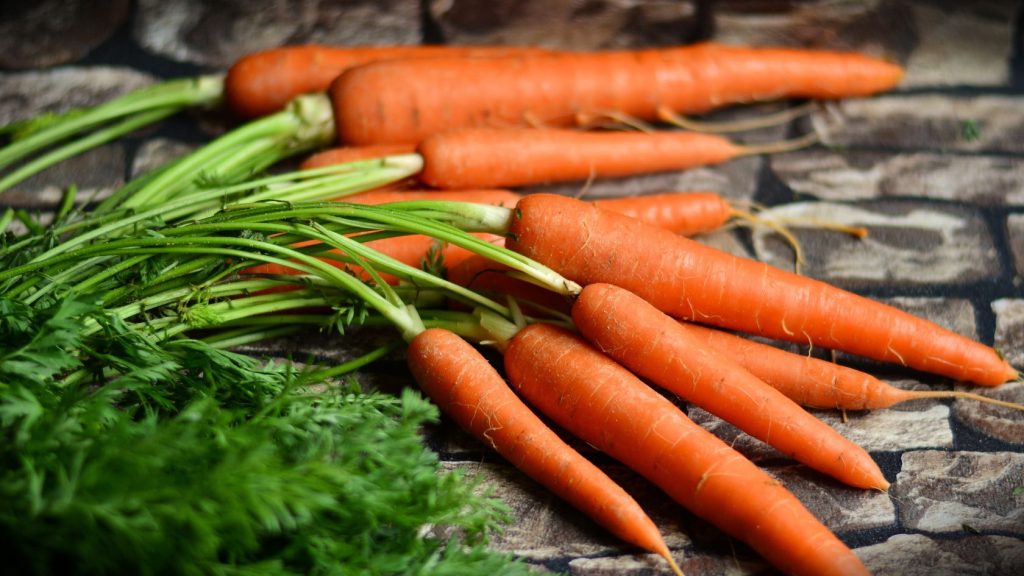
Why They’re Ideal for Survival:
Carrots are easy to grow and highly nutritious, making them a perfect survival food. Their bright orange hue signifies their richness in beta-carotene, which the body converts into vitamin A—critical for vision, immune function, and skin health.
Growing Conditions:
Carrots prefer cooler climates and loose, sandy soil to grow long and straight. But don’t worry if your soil isn’t perfect—they can still flourish in most conditions as long as you keep them well-watered and weed-free (Pro Tip: always use organic pesticides).
Storage & Preservation:
Carrots are exceptional for long-term storage. They can be kept fresh for months in a root cellar or even stored in damp sand to preserve their crisp texture. Additionally, they can be dehydrated or pickled for even longer preservation.
Nutrition:
Carrots are loaded with beta-carotene, fiber, and antioxidants, which protect the body from harmful free radicals. They also contribute to a healthy digestive system and overall well-being.
4. Squash (Winter Varieties)

Why They’re Ideal for Survival:
Winter squash is the gift that keeps on giving. These hefty vegetables are nutrient-dense, and when stored correctly, they last for months. They are perfect for cozy homestead recipes like soups, casseroles, and roasting, making them a versatile addition to any survival food plan.
Growing Conditions:
Squash requires warm weather and plenty of space to spread out, making it ideal for large gardens or raised beds. But the effort is worth it, as each plant yields several pounds of nutrient-rich food.
Storage & Preservation:
Once cured (by letting the squash sit in a warm, dry area for about a week), these vegetables can be stored in a cool, dry place for several months, giving you a durable food source through the colder months.
Nutrition:
Packed with vitamins A and C, squash is also a great source of carbohydrates and fiber. It nourishes the body while providing energy to get through the toughest of times.
5. Tomatoes
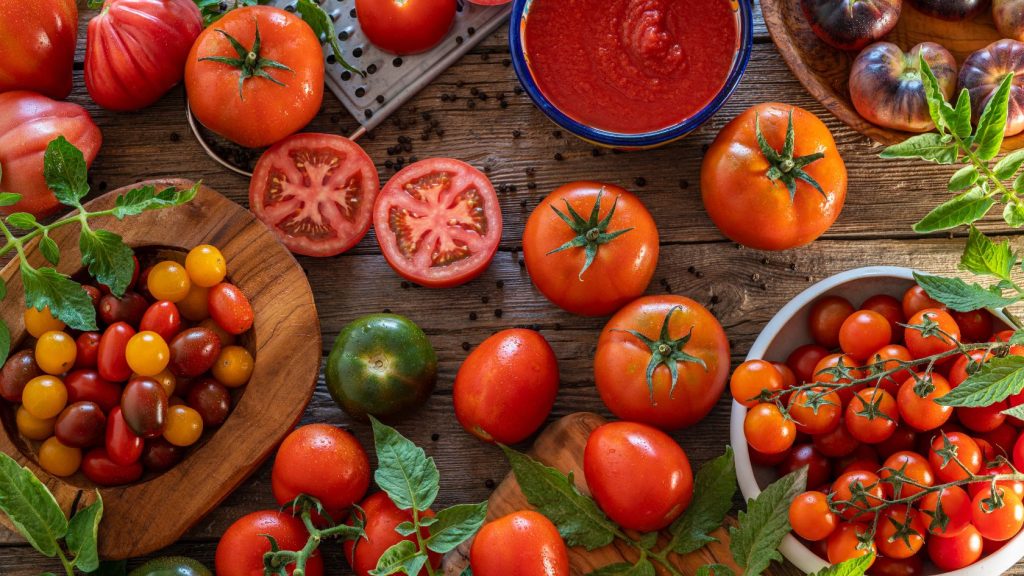
Why They’re Ideal for Survival:
Tomatoes are garden champions, bringing flavor, nutrition, and variety to your survival food options. Fresh tomatoes, canned tomatoes, tomato sauces, and even sun-dried tomatoes—all offer countless culinary possibilities.
Growing Conditions:
Tomatoes love warm, sunny environments with well-drained soil. They’re relatively easy to grow as long as they have plenty of sunlight, regular watering, and a sturdy trellis to support their vines.

15 of the most popular tomato seed varieties. Seeds are all individually packaged with zip-lock bag system for long-term storage.
Storage & Preservation:
Tomatoes can be canned, dried, or turned into sauces and salsas for long-term storage. Once preserved, they bring summer’s flavor to your table all year long. Make sure to choose the best tomatoes for canning.
Nutrition:
Tomatoes are loaded with vitamins C and K, along with lycopene, a powerful antioxidant known for its role in heart health and cancer prevention.
6. Kale
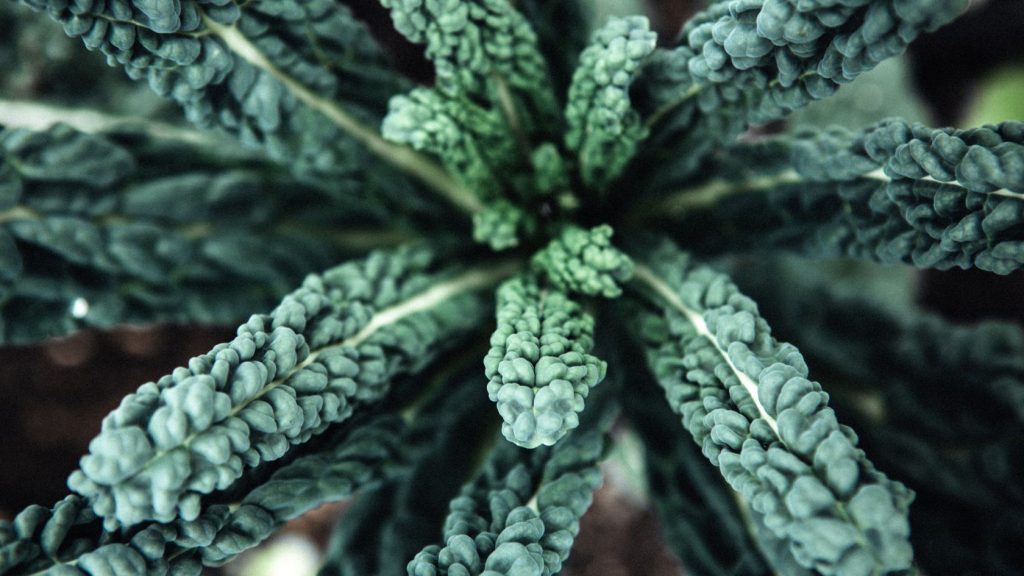
Why They’re Ideal for Survival:
Kale is a hardy superfood, one of the most nutrient-dense vegetables on the planet. Its toughness means it can grow even in less-than-ideal conditions, making it a dependable survival crop.
Growing Conditions:
Kale thrives in cooler climates and can even withstand frost, which makes it perfect for fall and winter harvests. Its leaves can be harvested continuously, providing you with fresh greens throughout the growing season.
Storage & Preservation:
Kale can be blanched and frozen or dried for use in soups and smoothies. When properly preserved, it can be a long-lasting source of vitamins and minerals.
Nutrition:
Kale is loaded with vitamins A, C, and K, calcium, and iron. Its dense nutritional profile supports bone health, boosts immunity, and provides vital antioxidants.
7. Cabbage
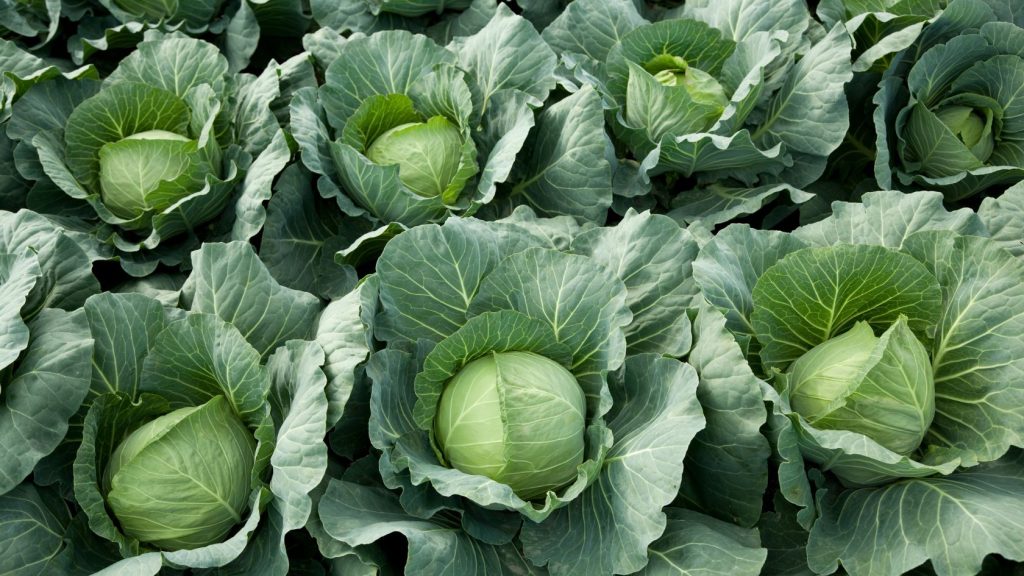
Why They’re Ideal for Survival:
Cabbage is not only nutritious but also incredibly versatile. Whether eaten fresh, cooked, or fermented into sauerkraut, it’s a staple in many traditional diets and offers a long-lasting food source.
Growing Conditions:
Cabbage grows best in cooler weather and thrives in well-drained soil. It’s relatively easy to grow, making it an ideal choice for beginner gardeners looking to add a reliable crop to their survival garden.
Storage & Preservation:
Fresh cabbage can be stored in a cool place for weeks, even months. For extended preservation, ferment it into sauerkraut—a probiotic-rich superfood that can last for years in storage.
Nutrition:
Cabbage is rich in vitamins C and K, fiber, and antioxidants, promoting digestion, immune health, and overall vitality.
8. Garlic
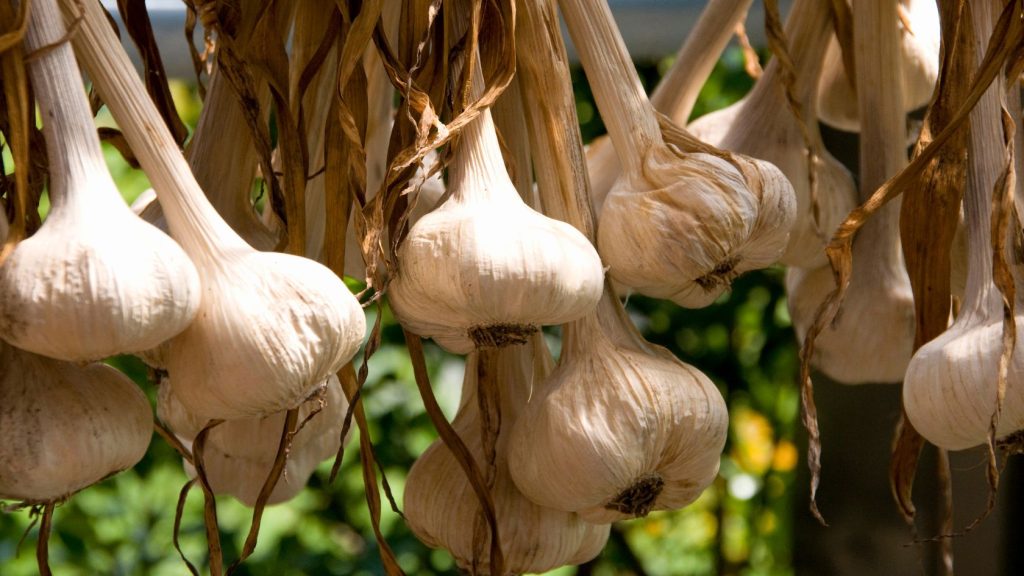
Why It’s Ideal for Survival:
Garlic is not only a culinary staple but also a medicinal powerhouse, making it an essential crop for any survival garden. Its strong antibacterial, antifungal, and antiviral properties mean it can be used not just for flavoring meals but also for boosting your immune system in times of need. In the world of self-sufficiency, garlic plays a dual role as both food and medicine, offering natural protection against infections and promoting overall health.
Growing Conditions:
Garlic is one of the easiest crops to grow. Plant individual cloves in the fall, and by next summer, you’ll have a full bulb ready for harvest. It thrives in a variety of soils and climates, though it prefers well-drained, fertile soil and plenty of sunlight. Since garlic doesn’t require much space, you can grow it in containers, raised beds, or tucked between other plants in your garden.
Storage & Preservation:
Once harvested, garlic has an impressive storage life. Hang it in bunches or lay it out in a cool, dry area, and it can last for up to six months or more. You can also preserve garlic by drying, fermenting, or even turning it into garlic powder or garlic oil for long-term use. Its versatility in the kitchen, coupled with its longevity in storage, makes it an indispensable crop.
Nutrition:
Garlic is rich in sulfur compounds like allicin, which has potent health benefits. It’s been shown to improve heart health, lower blood pressure, and boost the immune system. In addition to its medicinal qualities, garlic also contains vitamins C and B6, manganese, and antioxidants, which contribute to overall well-being.
9. Onions

Why They’re Ideal for Survival:
Onions are an essential ingredient in virtually every cuisine around the world, and their robust flavor is only part of the reason they’re so beloved. They are nutrient-dense and have a long shelf life, making them perfect for survival situations. Onions also boast anti-inflammatory and antioxidant properties, helping to protect your body from illness during times of stress.
Growing Conditions:
Onions are relatively easy to grow and can thrive in a wide range of climates and soil types, though they prefer well-drained, loose soil and plenty of sun. You can grow onions from heirloom seeds, sets (small onion bulbs), or transplants, and with proper care, they will yield a substantial harvest. Onions can be planted in rows, containers, or even integrated into your existing garden layout.
Storage & Preservation:
Onions store exceptionally well, making them a great option for long-term food storage. After harvesting, allow them to cure in a dry, ventilated area for a few weeks. Once properly dried, onions can last several months in a cool, dark place. You can also preserve onions by dehydrating or pickling them, providing an even longer-lasting food source.
Nutrition:
Onions are packed with nutrients, including vitamin C, B vitamins, and potassium. They’re also rich in quercetin, a powerful antioxidant that supports heart health and reduces inflammation. Additionally, onions have been shown to have antimicrobial properties, which can help ward off infections—another reason they’re a valuable addition to any survival garden.
10. Corn
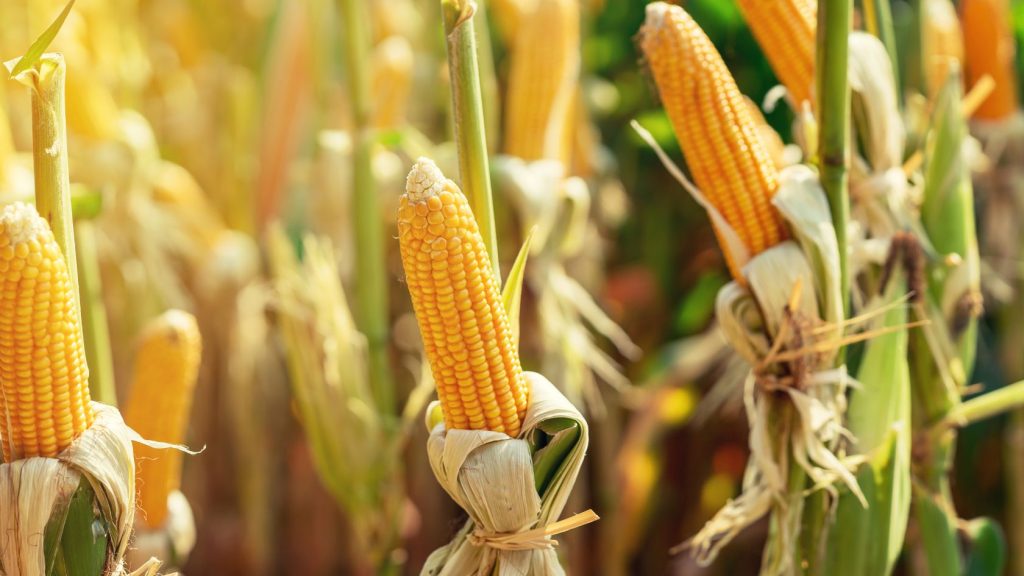
Why It’s Ideal for Survival:
Corn has been a staple crop for civilizations for thousands of years, and for good reason. It’s not only versatile in its uses—from fresh corn on the cob to dried kernels ground into flour—but also incredibly high in calories and carbohydrates, making it ideal for survival situations. Corn can be a primary source of sustenance, providing the energy needed to endure tough times. Its adaptability across a range of climates and conditions further solidifies its place as one of the most valuable crops for a survival garden.
Growing Conditions:
Corn thrives in warm weather and requires a lot of sunshine, typically around 6-8 hours of direct light per day. It’s a relatively easy crop to grow, but it does demand space, as it’s best planted in blocks rather than rows to ensure proper pollination. Corn prefers well-drained, fertile soil with a high nitrogen content. For optimal growth, regular watering is necessary, especially during the pollination and ear development stages.
Corn can be paired with beans and squash using the traditional “Three Sisters” method of companion planting, where each plant benefits the others, creating a symbiotic growing system that enriches the soil and improves yield.
Storage & Preservation:
Corn offers multiple storage options, depending on how you plan to use it. Fresh ears can be enjoyed during the growing season, but for long-term storage, drying is the way to go. Once fully dried, the kernels can be stored in airtight containers and used to make cornmeal, hominy, or popped for popcorn. Corn can also be canned, frozen, or ground into flour, which extends its shelf life significantly and makes it more versatile for cooking and baking throughout the year.
Nutrition:
Corn is a carbohydrate-rich crop that provides a significant amount of calories, essential for maintaining energy levels in survival situations. It’s also a good source of fiber, which supports digestive health. While not as nutrient-dense as some other crops, corn contains vitamins such as B-complex vitamins (particularly niacin, thiamine, and folate), along with magnesium and phosphorus. When combined with other foods like beans, corn forms a complete protein, making it a cornerstone of a balanced survival diet.
11. Beets
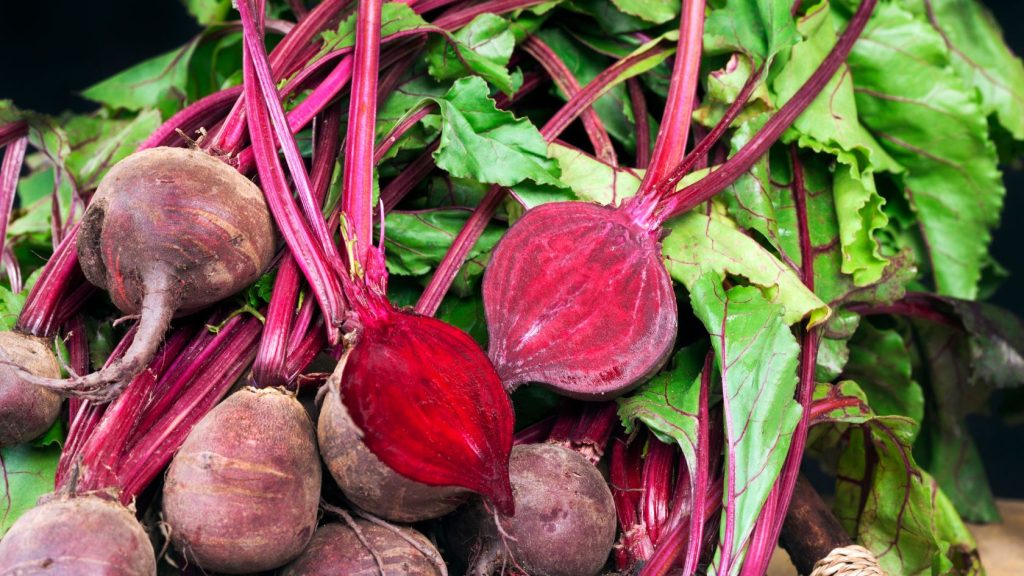
Why They’re Ideal for Survival:
Beets are a nutrient-packed root vegetable that offer both versatility and durability, making them an excellent addition to any survival garden. Not only can you harvest the root, but the leafy greens are also edible, providing a double harvest from a single crop. Beets are rich in essential vitamins and minerals, helping to maintain good health during challenging times. With their ability to grow in a variety of climates and soil conditions, beets are a reliable and low-maintenance survival food.
Growing Conditions:
Beets thrive in cooler weather and are ideal for early spring or fall planting. They prefer well-drained, loamy soil with a neutral pH and require regular watering to keep the soil consistently moist, though not waterlogged. Beets grow best in full sun but can tolerate partial shade. They are relatively fast-growing, with the roots ready to harvest in as little as 50-70 days, depending on the variety. Additionally, beet greens can be harvested early, often within just a few weeks, providing a nutritious bonus while you wait for the roots to mature.
Storage & Preservation:
Once harvested, beets have impressive storage capabilities. The roots can be stored in a cool, dark place, like a root cellar, for several months when kept in slightly damp sand or sawdust to prevent them from drying out. For even longer preservation, beets can be canned, pickled, or frozen. Beet greens can be blanched and frozen or dried for later use, ensuring you make the most out of every plant. Their long shelf life and variety of preservation options make beets a reliable food source for winter and beyond.
Nutrition:
Beets are packed with essential nutrients, including fiber, folate, manganese, potassium, and vitamin C. They are particularly known for their high nitrate content, which has been shown to improve blood flow and lower blood pressure, making them a heart-healthy option. Beet greens are equally nutritious, offering high levels of vitamins A, C, and K, along with calcium and iron. This nutrient density makes beets a powerful addition to a survival garden, providing key vitamins and minerals that promote overall well-being.
12. Sweet Potatoes
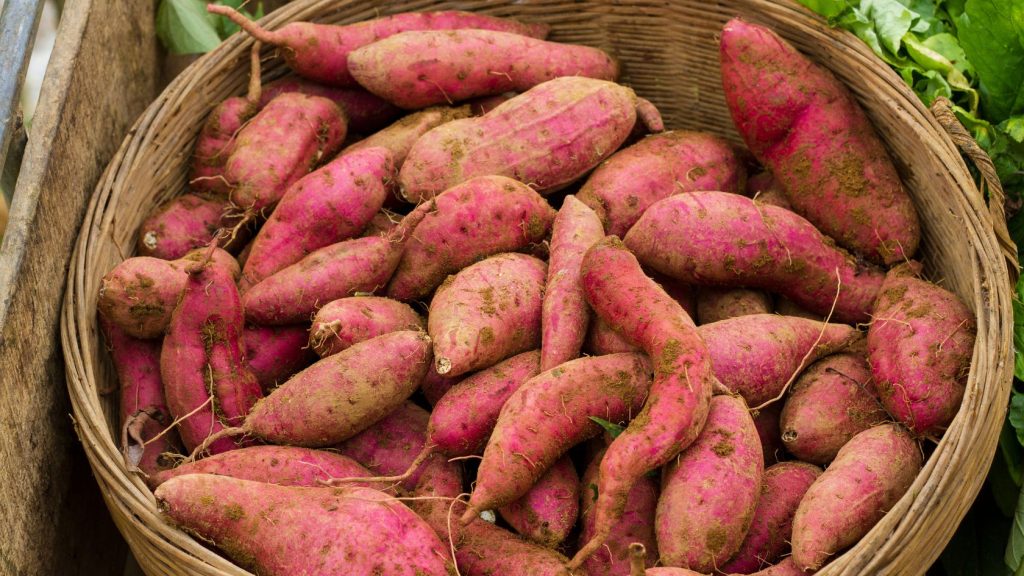
Why They’re Ideal for Survival:
Sweet potatoes are a true survival crop, providing both a nutrient-dense food source and remarkable resilience in various growing conditions. Known for their high energy content, sweet potatoes are rich in complex carbohydrates that provide sustained energy, making them a staple in survival scenarios. Beyond their nutritional profile, sweet potatoes are versatile in the kitchen, lending themselves to both sweet and savory dishes. Their ability to grow in less-than-ideal conditions makes them a must-have for anyone looking to cultivate a dependable and long-lasting food supply.
Growing Conditions:
Sweet potatoes thrive in warm climates and require a long growing season of at least 90 to 120 frost-free days. They grow from “slips”—rooted sprouts that are planted into well-drained, loose soil with plenty of sunlight. Sweet potatoes are relatively low-maintenance once established and require little more than occasional watering and weeding. Unlike regular potatoes, sweet potatoes grow underground as tubers, spreading out from the main plant. Their sprawling vines also help suppress weeds, making them ideal for larger garden spaces or even as ground cover for companion planting.
Storage & Preservation:
One of the greatest advantages of sweet potatoes is their excellent storage potential. After harvesting, sweet potatoes need to be cured for about 10 to 14 days in a warm, humid environment. This process toughens the skin and helps convert starches to sugars, enhancing both their flavor and shelf life. Once cured, sweet potatoes can be stored in a cool, dry place for up to six months, providing a long-term, reliable food source. Sweet potatoes can also be frozen, dehydrated, or canned to further extend their usability throughout the year.
Nutrition:
Sweet potatoes are nutritional powerhouses, rich in beta-carotene, which the body converts into vitamin A, essential for maintaining healthy vision, immune function, and skin health. They also provide a significant amount of dietary fiber, vitamins C and B6, potassium, and manganese. Their high antioxidant content helps reduce inflammation and oxidative stress, promoting overall health and vitality—key benefits when resources are scarce. Plus, their natural sweetness offers a comforting, filling option for meals in challenging times.
Sweet potatoes are a survival garden essential, offering unmatched versatility and nutritional value. With their ability to thrive in warm climates, store for months, and provide a host of health benefits, they’re an irreplaceable crop for anyone focused on self-sufficiency. Whether roasted, mashed, or added to stews, sweet potatoes will nourish and sustain you, making them an indispensable part of your survival strategy.
Growing your own survival foods is not just about preparedness—it’s about independence and resilience. By planting these seven crops, you’re investing in your health and self-reliance, cultivating a garden that nourishes your body and soul.
Each of these plants is not only easy to grow but also perfect for long-term storage, providing you with essential nutrition when it matters most. Learn more about preserving these crops without electricity in the root cellaring video below.
Start with these survival crops, and watch your garden grow into a reliable, sustainable source of food. Whether you’re preserving tomatoes, canning beans, or curing squash for winter, your garden will become a lifeline of sustenance and security.
Remember, the key to a thriving survival garden lies in diversity and smart preservation techniques, ensuring that your hard work pays off for seasons to come.
See Our Latest Posts
- Simple Recipes for DIY Herbal Salves and Balms
- Delicious One-Pot Homestead Meals from Pantry Staples
- 5 Best Meat Dehydrators for DIY Jerky on Amazon (2025)
- Urban Homestead Hacks from Backyard to Balcony
- Creative Strategies for Frugal Homesteading
Write A Guest Post For Us!
Are you passionate about gardening, raising livestock or preserving food? We’re excited to announce that we’re now accepting guest posts for all aspects of homesteading!

